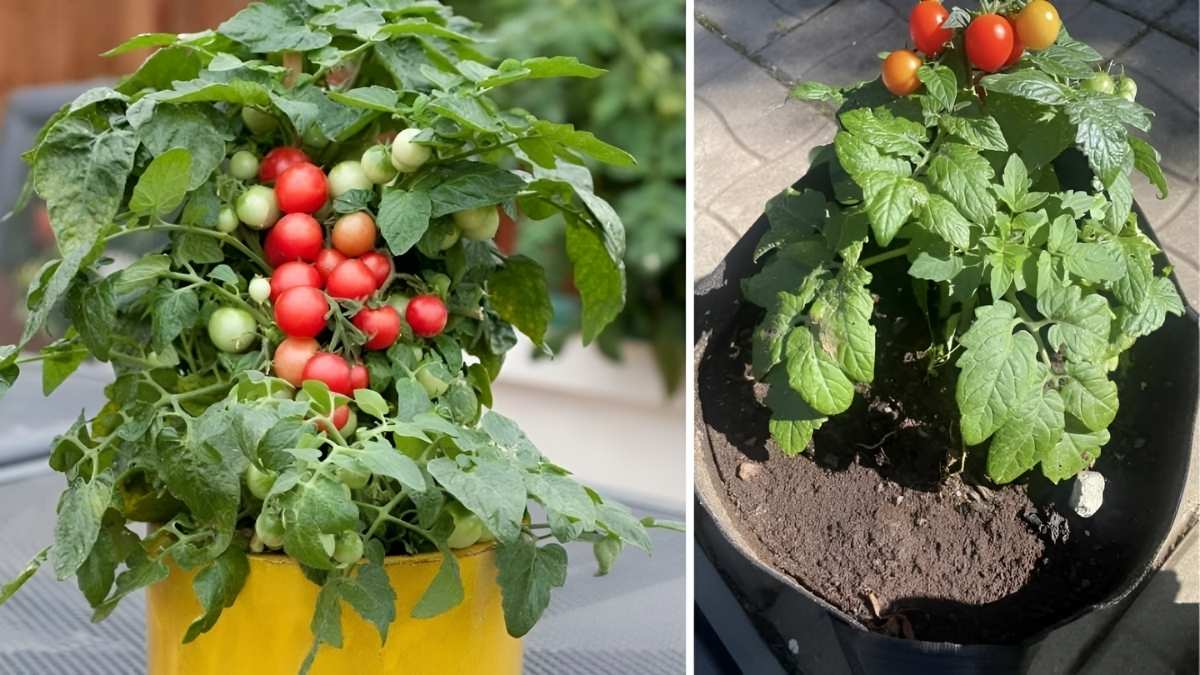Tomatoes are one of the most popular and rewarding plants to grow, whether you’re a seasoned gardener or just starting out. If you don’t have a lot of space, growing tomatoes in buckets can be the perfect solution. Whether you’re growing them indoors on your windowsill or outdoors on your patio or balcony, this simple method allows you to enjoy fresh, homegrown tomatoes without the need for a large garden.
Why Grow Tomatoes in Buckets?
Growing tomatoes in containers offers many advantages. It’s an ideal option for people with limited space, poor soil, or even those who want to avoid the hassle of digging up their entire garden. Buckets give you the flexibility to move plants around and control the growing conditions better than if they were planted directly in the ground.
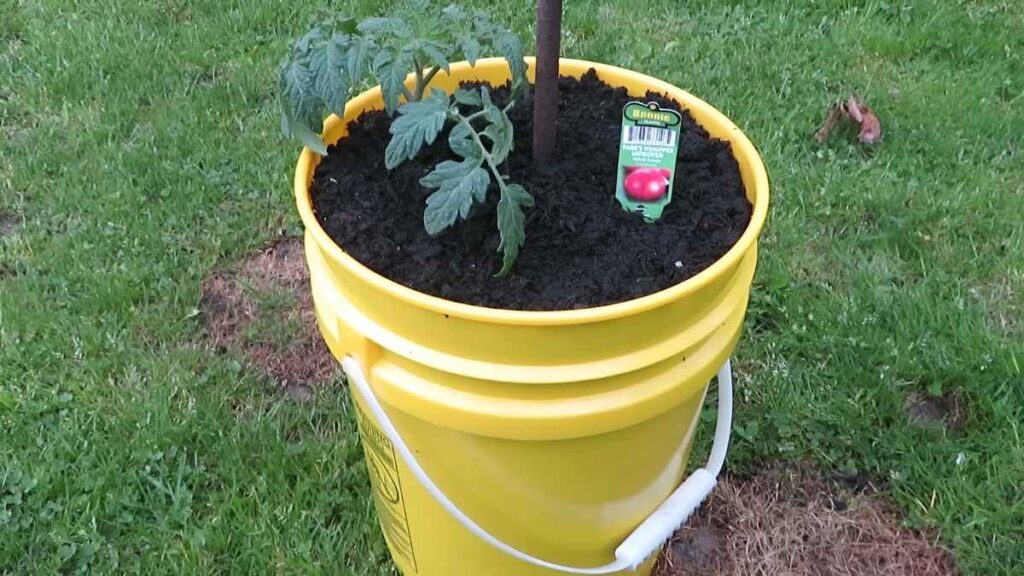
Plus, growing in a bucket helps keep the plant’s roots confined, reducing the chance of diseases that affect tomato plants, and it also makes it easier to manage water and soil quality. It’s a win-win!
Choosing the Right Bucket
Before you start, it’s important to choose the right container. While any large, sturdy container will do, a 5-gallon bucket is often recommended. This size provides enough room for the roots to grow while also ensuring your tomato plant gets sufficient water and nutrients.
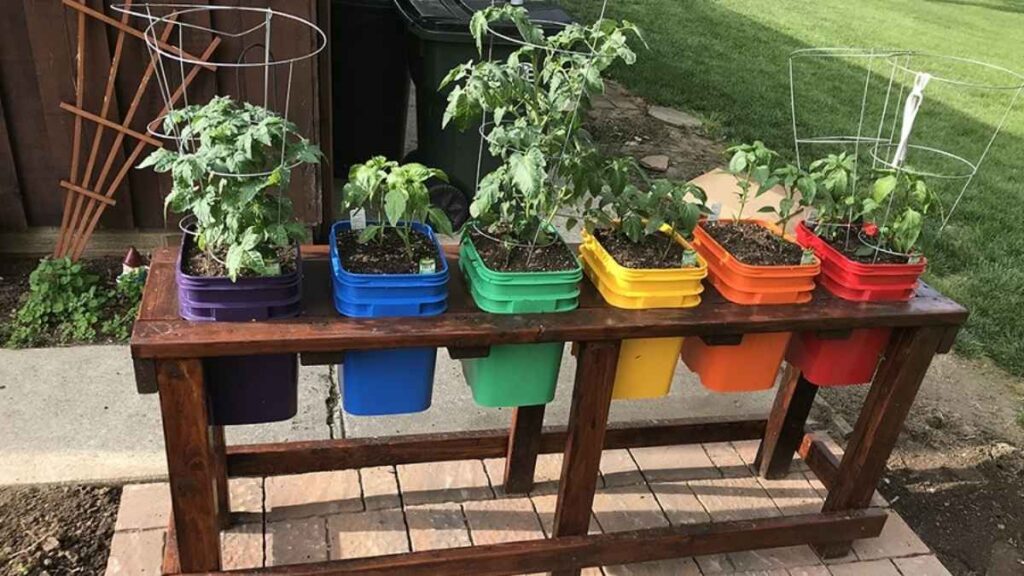
Make sure the bucket has drainage holes at the bottom. Tomatoes are very sensitive to waterlogging, so good drainage is essential to prevent root rot. If the bucket doesn’t already have holes, simply drill a few small ones yourself.
Selecting the Best Tomato Variety for Containers
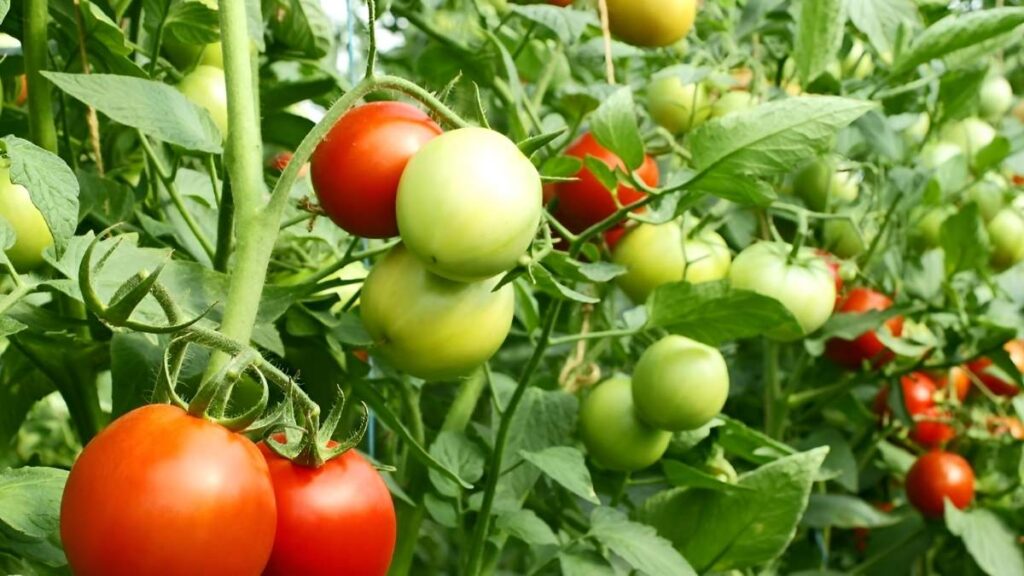
Not all tomato varieties are suited for container gardening. You’ll want to select varieties that are compact and bushy, as they will grow best in a confined space. Some of the best tomato varieties for growing in buckets include:
- Tiny Tim: A dwarf cherry tomato variety, perfect for small spaces.
- Bush Early Girl: A compact, early-maturing variety that’s perfect for containers.
- Balcony: A cherry tomato plant designed specifically for growing in small spaces.
If you’re growing indoors, opt for smaller varieties like cherry or grape tomatoes, as they don’t need as much space and thrive in containers.
Planting Your Tomatoes in Buckets
Now that you have your bucket, it’s time to plant. Here’s a simple step-by-step guide to get started:
- Prepare the Soil: Fill your bucket with high-quality potting soil. Avoid using garden soil, as it can be too heavy and may not drain well. A well-draining potting mix, preferably one made for tomatoes or vegetables, will provide your plant with the best growing conditions.
- Plant Your Tomato: Make a small hole in the soil and gently place the tomato seedling in. Bury the plant up to its first set of leaves. Tomato plants can develop roots along their stems, so planting them deep encourages stronger root growth.
- Water: After planting, water the tomato well. Ensure the water drains out of the bottom of the bucket. Tomatoes like to be kept consistently moist, but they don’t like to be waterlogged. Check the soil regularly, and water whenever the top inch of soil feels dry.
- Provide Support: Tomatoes are vine plants, so they need support as they grow. You can use a tomato cage, stake, or even a makeshift trellis. Support should be added early on to avoid disturbing the roots later.
Growing Tomatoes Indoors
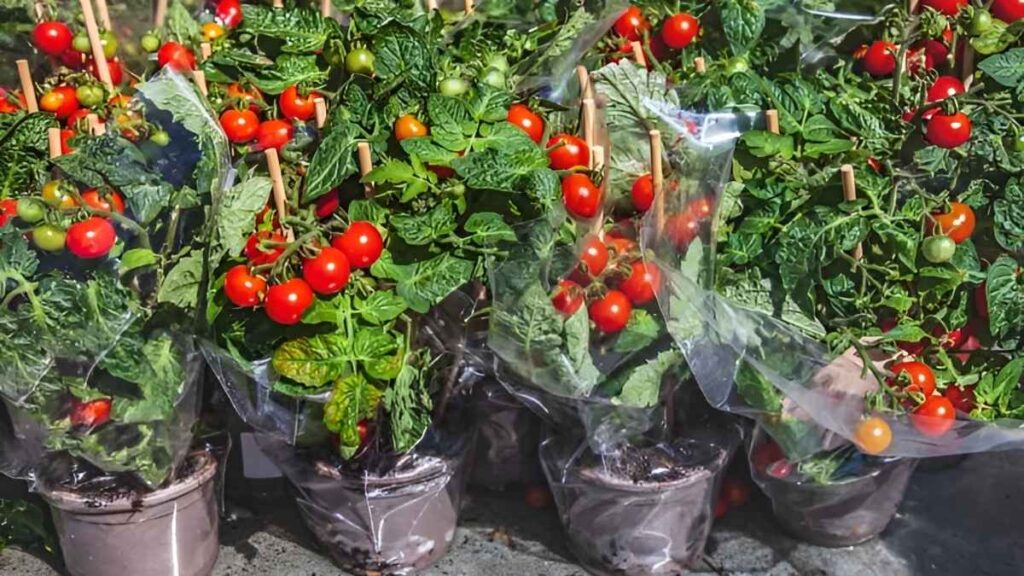
Growing tomatoes indoors can be a bit trickier, but it’s definitely doable with the right care.
- Light: Tomatoes need a lot of light to thrive. If you’re growing them indoors, ensure they get at least 6-8 hours of direct sunlight each day. A south-facing window is ideal, but if that’s not available, you might want to invest in grow lights to supplement natural light.
- Temperature: Tomatoes prefer warmer temperatures, around 70-75°F (21-24°C) during the day and a bit cooler at night. Keep the plant away from drafts and air conditioning units, as sudden temperature fluctuations can stress the plant.
- Pollination: Indoor tomatoes might need a little help with pollination since there are no bees around. You can gently shake the plant or use a soft brush to transfer pollen from one flower to another.
Growing Tomatoes Outdoors in Buckets
If you’re growing tomatoes outdoors, buckets are a great way to keep your plants contained and manageable.
- Sunlight: Make sure your bucket plants get at least 6-8 hours of sunlight daily. A sunny patio, balcony, or deck is perfect for growing tomatoes in containers.
- Watering: Outdoor plants are more prone to drying out quickly in hot weather, so be sure to water your tomatoes regularly. Use a soaker hose or water deeply to encourage strong roots.
- Fertilizing: Tomatoes are heavy feeders, so regular fertilizing is important. Use a balanced, slow-release fertilizer or one designed specifically for tomatoes. Alternatively, organic options like compost or worm castings work wonders.
Common Problems and Solutions
While growing tomatoes in buckets is relatively straightforward, there are a few common challenges to keep in mind:
- Leaf Curling or Yellowing: This could be a sign of overwatering or underwatering. Check the soil moisture regularly and make sure your bucket has proper drainage.
- Blossom End Rot: This is often caused by calcium deficiency, which can happen if the plant experiences uneven watering. Make sure to keep the soil consistently moist, and consider adding a calcium supplement.
- Pests: While less of an issue indoors, outdoor tomato plants can be prone to pests like aphids and spider mites. Neem oil or insecticidal soap can help keep these pests under control.
Harvesting Your Tomatoes
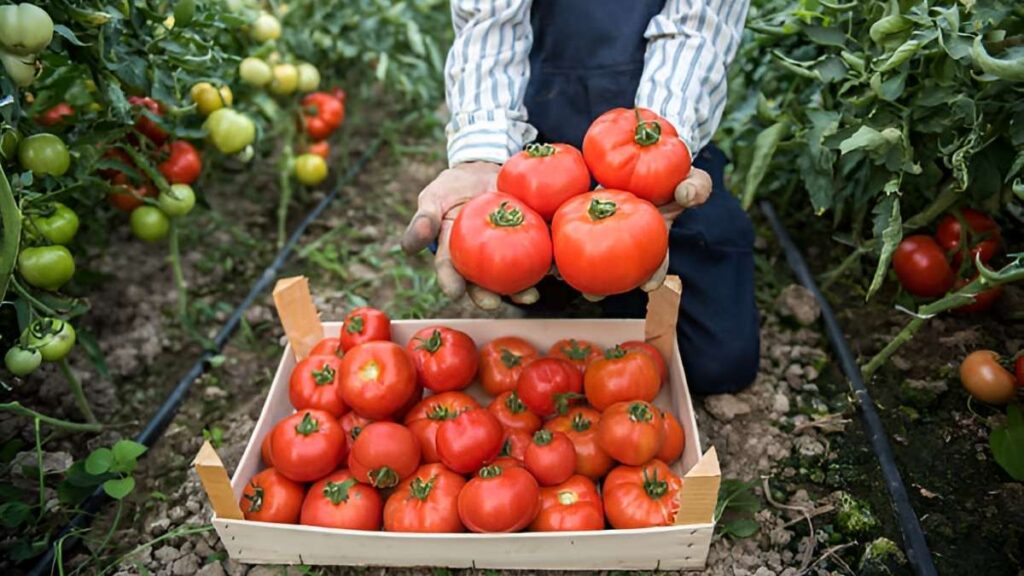
Tomatoes are ready to harvest when they are fully ripe and have developed their characteristic color. For most varieties, this means a bright red or deep orange color. Gently twist or cut the tomato from the vine, taking care not to damage the plant.
If you have a large number of tomatoes ripening at once, don’t hesitate to harvest them slightly before they’re fully ripe and let them finish ripening indoors. This can help prevent birds or other animals from getting to them first.
Final Thoughts
Growing tomatoes in buckets, whether indoors or outdoors, is a rewarding and manageable way to grow your own fresh produce. With a little care and attention, you’ll soon be enjoying your very own homegrown tomatoes in salads, sandwiches, and all your favorite dishes. Happy gardening!

